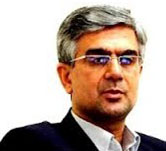Sphingosine-1-Phosphate: a Growth Factor in Hypertrophy following Resistance Training
Author(s):
Abstract:
Sphingosine-1-phosphate (S1P) is a bioactive platelet-derived sphingolipid involved in regulation, proliferation, differentiation, hypertrophy and anti-apoptosis of cells and activation of satellite cells. The aim of the present study was to investigate S1P as a growth factor in response to resistance training in male Wistar rats. 24 eight-week-old male Wistar rats (190–250 gr.) were used in this study. After a week of acclimation to the animal facility, the rats were assigned randomly to a control (N=12) or training (N=12) group. Resistance training was performed using a 1-meter ladder with 2 cm distance between the grids with 85° inclination, and weights attached to rats’ tails. The content of sphingosine-1- phosphate (S1P) in the chloroform layer was determined by high performance liquid chromatography (HPLC). To determine mRNA gene expression, Real-time PCR was used. S1P1, S1P2, S1P3, MyoD and Myogenin gene expression was investigated in HFL and SOL. The Results showed that resistance training increased the total content of S1P in plasma (p=0.001) of trained group in comparison with the control group. Furthermore, resistance training increased the gene expression of S1P1 in FHL (p=0.001) and SOL (p=0.000), S1P2 in FHL (p=0.000) and SOL (p=0.603), S1P3 in FHL (p=0.021) and SOL (p=0.009), MyoD in FHL (p=0.000) and SOL (p=0.001) and Myogenin in FHL (p=0.000) and SOL (p=0.000) of experimental group in comparison with control. There was a significant positive correlation between S1P plasma and gene expression of MyoD in the experimental group. There was no significant correlation between gene expression of S1P1 and MyoD gene expression in groups or muscles (p>0.05) while there was a significant positive correlation between gene expression of Myogenin and S1P1. Furthermore, there was a significant positive correlation between S1P2 and MyoD gene expression. There was a significant positive correlation between S1P3 and MyoD gene expression. It can be concluded that resistance training can increase the S1P content in plasma and its receptors. According to structural and functional roles of sphingolipid and its receptors and their increase after resistance training, this factor might be a growth factor and a signaling pathway in skeletal muscle adaptation.
Keywords:
Resistance Training , S1P Receptor , Myogenin. , S1P , MyoD
Language:
Persian
Published:
Sport Biosciences, Volume:4 Issue: 12, 2012
Page:
111
https://magiran.com/p1062338
مقالات دیگری از این نویسنده (گان)
-
The role of olfactory sensory neurons in improving working memory following aerobic exercise training in adult male rats
Farzaneh Zeynali, Mohammad Shariatzadeh Joneydi *, Jalaledin Noroozi, , Mohammad Reza Raoufy
Sport Physiology, -
The role of neurotransmitters (serotonin and dopamine) in central nervous system fatigue during prolonged exercise
, Leila Fasihi *
Journal of New Approaches in Exercise Physiology, Winter and Spring 2023



